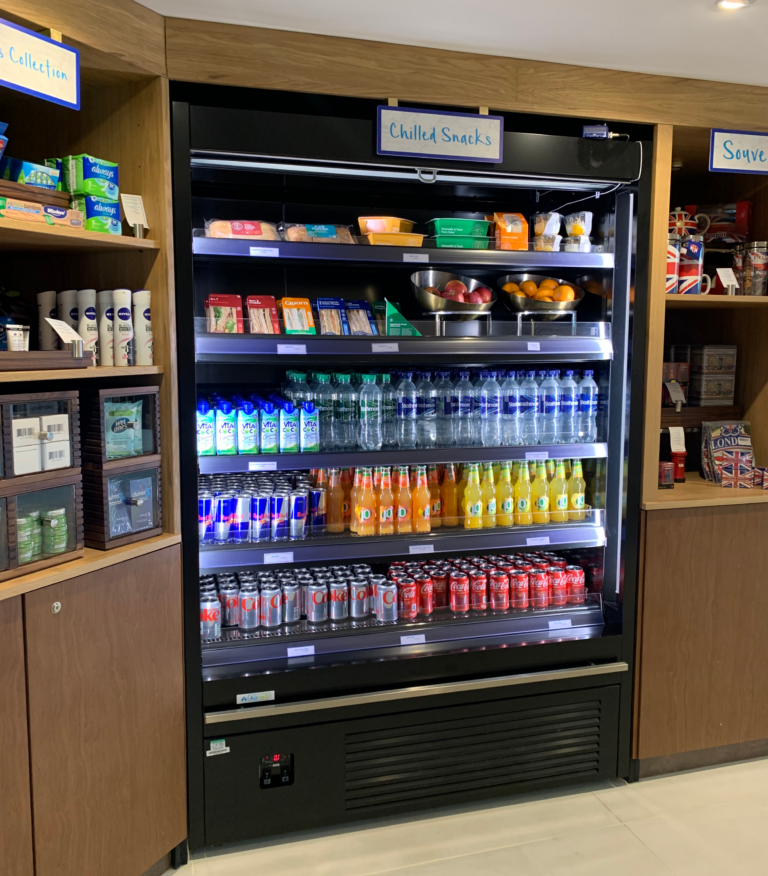
Necessity is the mother of invention
Nigel Bell, chairman of the Adande Group of companies, examines the options available for energy efficient retail display equipment.
It is said that food retailing operations use approximately 2% of the UK’s total electricity consumption and refrigeration can account for over 50% of a store’s usage, depending upon shop format and size. As large consumers retailers have a part to play in achieving net zero emissions by 2050, but the jury is still out on how we get there. The incentives for more efficient refrigerated display equipment have increased with higher energy prices and uncertainty over the security of supply. In 2015 the EU Commission voted against the mandatory fitting of doors on open front, refrigerated displays, leaving the door open for the development of alternative energy saving technology.
Challenges prompt change
Mankind has a track record of technical innovation in the face of adversity. Some of the most rapid scientific advances have come during periods of conflict and the threat of climate change will continue to prompt innovation. Take for instance the role of Tesla technology in accelerating the development of electric vehicles to reduce the impact of road transport on the environment. Retailers have been reluctant to employ cabinets with doors. Some have adopted doors before returning to open front cabinets after unhappy experiences. Indeed, if doors were the panacea they would have been universally adopted already. The trend with doors was temporarily slowed by the introduction of shelf edge technology, reinforcing retailers’ preference for open front cabinets. However, shelf edge technology has delivered only modest energy savings, which are insufficient in meeting net zero targets and significant cost reductions. Retailers appear to accept the limitations of cabinets with doors but are being ‘forced’ to adopt them as the only option. Cabinets with doors have signifi cant shortcomings impacting revenues, store layout and operating costs.
They have high maintenance costs in terms of cleaning, repair and the replacement of damaged doors. Whilst cabinets with doors may work in stores with low volume sales, they are not suitable for busy stores with frequent door openings. BS EN ISO 23953, states that tests on cabinets with glass doors should be conducted with 10 door openings per hour with an opening/closing cycle of 15 seconds, but Orlandi et al (2013) claimed that the figure can reach 60 per hour in supermarkets and in 2011 EPEE and EUROVENT stated that some food retailers have registered up to 250 door openings per hour. Frequent door openings cause chilled air spillage with a consequent increase in temperature within the cabinet, making the refrigeration plant work harder to restore cabinet temperature and resulting in higher energy consumption.
High visibility of goods and unfettered access to merchandise for browsing and shopping is essential for grocery retailing and impulse purchases, which was confirmed by our customer research at the stores of three leading retailers. 88% of customers thought the clear display of merchandise was “very important”, whilst a further 11.4% of those thought it “important”. 50.3% of those questioned stated that they would prefer to shop from open front cabinets, with only 12% stating that they would rather shop from cabinets with doors. 49.1% of respondents believed it was “very inconvenient” or “inconvenient” to open doors and 42.5% said it was “very difficult” or “difficult” to do so whilst holding a shopping basket or trolley. 29.9% answered that they would be less likely to shop from a refrigerated cabinet with doors. 43% of customers stated that they shop from cabinets with doors, including frozen food cases, only once a month or less.

Employing disruptive technology
There is a refrigeration solution available which addresses energy efficiency without compromise. Aircell is a hi-tech airfl ow management solution designed for use with open front refrigerated cabinets. The patented system has been designed, developed and manufactured in the UK. There were initial teething troubles, including bulky shelves which were difficult to reposition. Such problems have been overcome and the lightweight shelves can be manoeuvred by one person for flexible merchandising. Aircell works by segmenting the cabinet into a series of air flow managed cells with shorter air curtains. The smaller cells have a shorter air column and independent management of air movement, resulting in less pressure on the air curtain of each cell. This significantly reduces cold air spillage. There is less duty on the refrigeration machinery to maintain holding temperature and energy consumption is reduced. The system does not require back panel flow to support the air curtain, so it does not over cool food at the rear of the cabinet, which is common in cabinets with and without doors. Aircell is inherently versatile as it works with all refrigerants and can be incorporated within the existing designs of cabinet OEMs. Adande Refrigeration has supplied nearly 200 units powered by Aircell across the UK, the majority of which are our latest 1250 mm integral Bora grab-and-go model. These have been installed in food-to-go outlets, including universities, transport hubs, fast food chains and hotels. Energy saving characteristics are the headline appeal, but customers have also been impressed by Bora’s stable display temperatures.
In supervised trials accurate temperatures have been proven to maintain perishables at optimum quality over extended periods, reducing the amount of food thrown away due to deterioration in quality or appearance. As reported in the October 2023 issue of ACR News, UK cabinet manufacturer, Lucabo, has incorporated Aircell in its range of Aero retail displays. Lucabo unveiled the products at EuroShop 2023, where they were well received and the company is working with retailers on product development and trials. The next stage should be retailers encouraging in-store trials and assessment of remote models for larger retail outlets. The solution is available to committed OEMs, but the retailers must drive the process. Necessity is the mother of invention and Adande Aircell has given birth to and nurtured a refrigeration technology which sets new standards in performance, energy efficiency and food quality.


